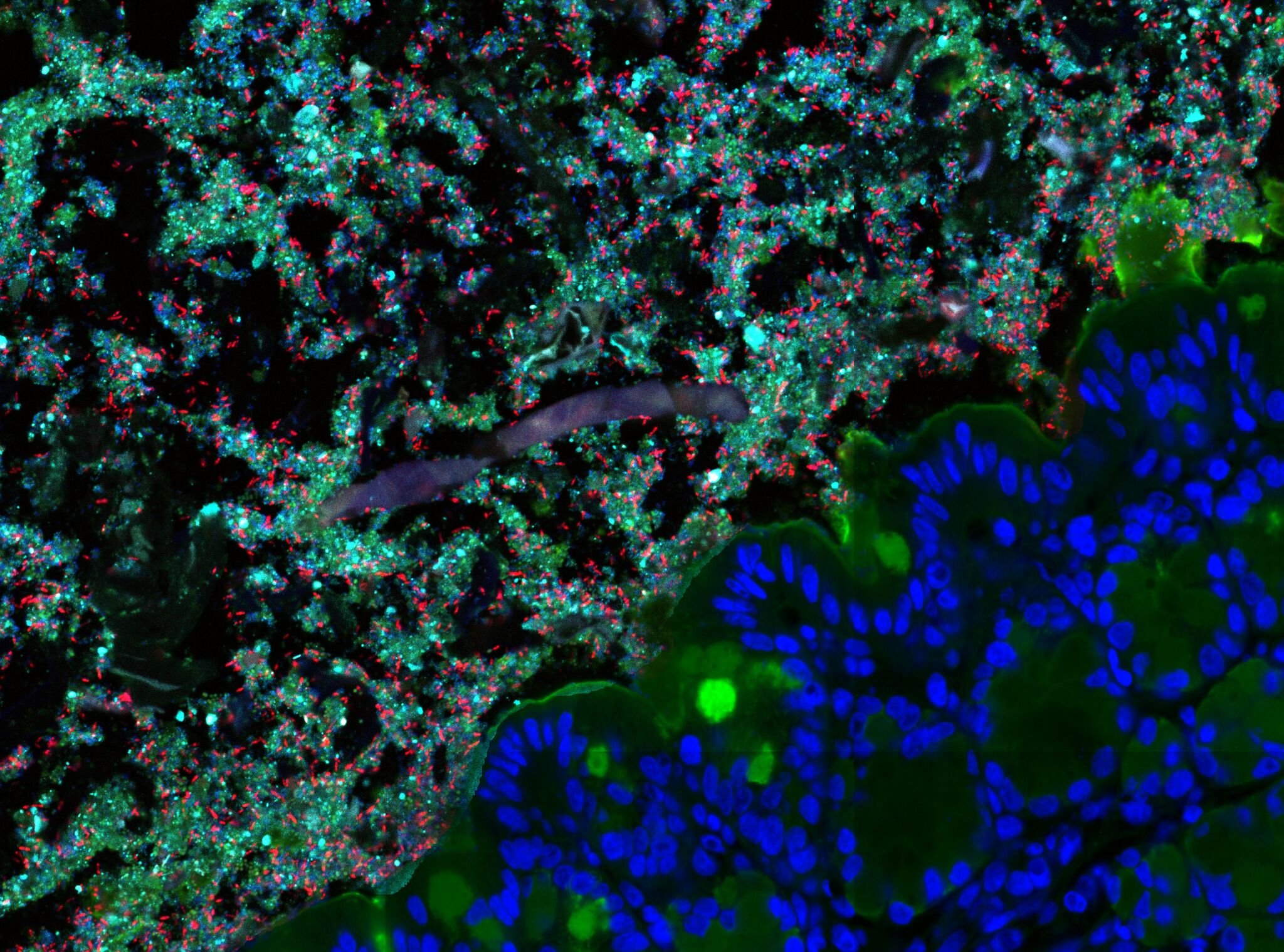
Microbial communities
Our goal is to understand and engineer diverse microbial communities, including the human microbiome. However, this is a challenging prospect because most microbial communities contain large numbers of evolving and interacting species, which makes them complex systems with many moving parts. We break down this complexity by combining ecological and evolutionary theory with a diverse set of methods from microbiology. For example, we discovered that one can predict which sets of human gut bacteria will inhibit an incoming pathogen based solely on the ecology of nutrient competition.
Image of the mammalian gut microbiome by Carolina Tropini, UBC
Video summary of some of our microbial ecology work, made by Oxford Sparks
Recent papers
Spragge F, Bakkeren E, Jahn, MT, Araujo EBN, Pearson CF, Wang X, Pankhurst L, Cunrath O, Foster KR 2023. Microbiome diversity protects against pathogens by nutrient blocking. Science, 382: eadj3502.
Yang Y, Coyte KZ, Foster KR, Li A 2023. Reactivity of complex communities can be more important than stability. Nature Communications, 14: 7204
Sharp C, Foster KR. 2022. Host control and the evolution of cooperation in host microbiomes. Nature Communications,13: 3567
Coyte KZ, Rao C, Rakoff-Nahoum S, Foster KR. 2021 Ecological rules for the assembly of microbiome communities. PLoS Biology 9:e3001116.
Coyte KZ, Schluter J, Foster KR. 2015. The ecology of the microbiome: networks, competition, and stability. Science, 350: 663-666.